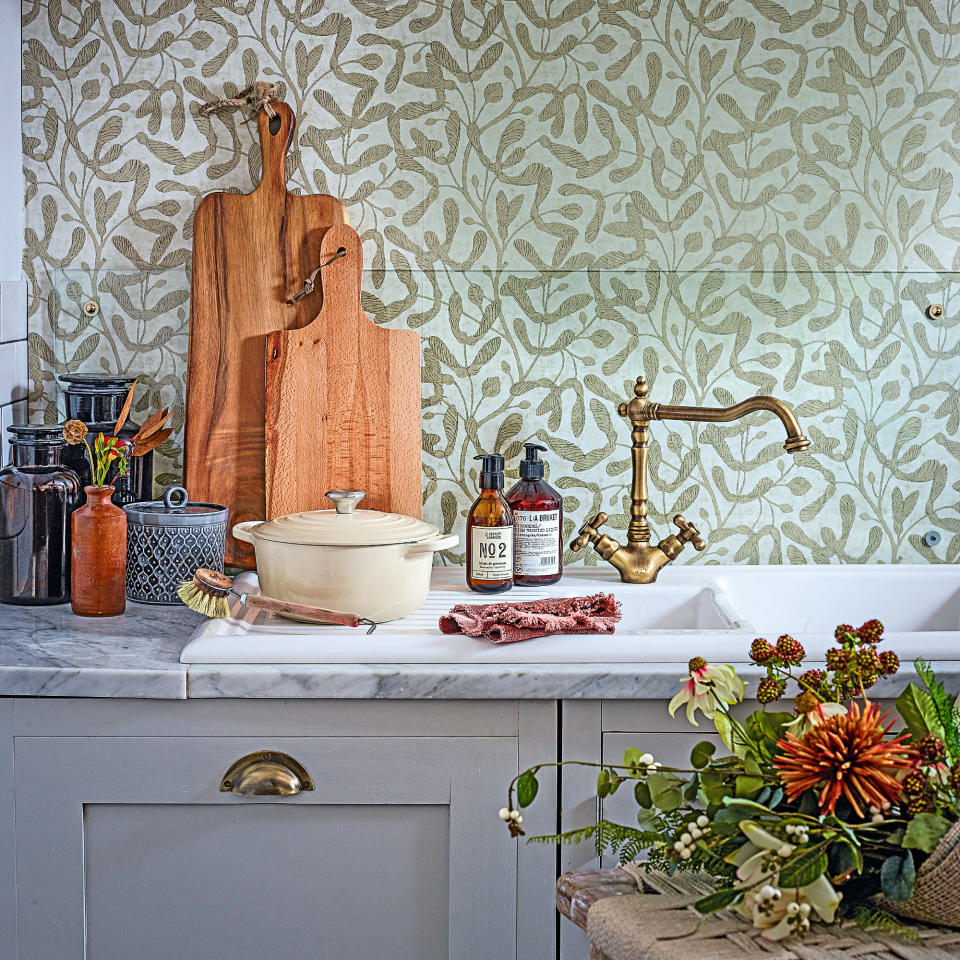How long does vinyl wrap last in a kitchen? Experts say it can last 'up to ten years' with these key tips

If you're researching renter-friendly solutions to update a kitchen, chances are you've looked into vinyl wrap. Although proving itself as an affordable method to upgrade the look of dated kitchen cabinets, how long does vinyl wrap actually last in a kitchen?
We think it goes without saying that vinyl wrapping a kitchen is easily one of the most (if not the most) popular ways to decorate a rented home without the risk of losing your deposit at the end of your tenancy. You have the freedom to make your kitchen feel personal to your interior style while having the assurance that it'll be easy enough to remove once it's time to move on.
However, if you're investing time into upgrading your home (even if it's an easy DIY project), you'll likely want to know if it's an improvement that'll last – especially in a high-traffic area like a kitchen where wear and tear is inevitable. Thankfully, renters will be happy to know that vinyl wrap can last for up to several years on your kitchen cabinets and work surfaces depending on a few factors.

How long does vinyl wrap last in a kitchen?
'The resilience of a vinyl-wrapped kitchen will largely depend on the installation and maintenance techniques that are implemented,' begins Richard Cotgrove, founder of Stucco Veneziano. 'When cared for properly, a vinyl-wrapped kitchen can last for several years.'
A couple of key things to consider that will affect how long vinyl wrap will last in a kitchen are the wrap you choose and how well it is applied.
'If you choose a high-quality vinyl wrap and have it professionally installed, it can potentially last for up to ten years, provided it is looked after correctly,' explains Tim Warren, DIY expert at Adkwik. 'If the wrap is poorly installed, issues such as bubbling, peeling, and premature wear can occur, which will affect its longevity.'

However, rest assured that if you're planning to undergo the task of vinyl wrapping without professional assistance as part of your kitchen design proposal, it's still possible to achieve a polished finish.
'For best results and longevity, take care to thoroughly clean and dry the surface before applying – any residue or imperfections may cause bubbles or peeling down the line,' cautions Judi Kutner, licensed realtor and senior contributor at Virtual Staging. 'Apply several thin coats with overlapping edges for a smooth, professional look. Re-wrap or patch any worn spots as needed.'

In addition, opting for a vinyl wrap that is suitable for placing hot pans onto (if you're using it to update your kitchen worktops, for example) is extremely important. 'It's crucial to avoid exposing the vinyl to excessive heat or moisture, as these factors can degrade the material over time,' warns Richard.
But, so long as you keep these factors in mind and are realistic about its limitations compared to permanent materials, you can feel confident about opting to use vinyl wrap to instantly transform dated cabinets and worktops as part of a budget kitchen decorating idea.
'With some TLC, vinyl wrap is a low-commitment way to enjoy a new look in your kitchen,' concludes Judi.


